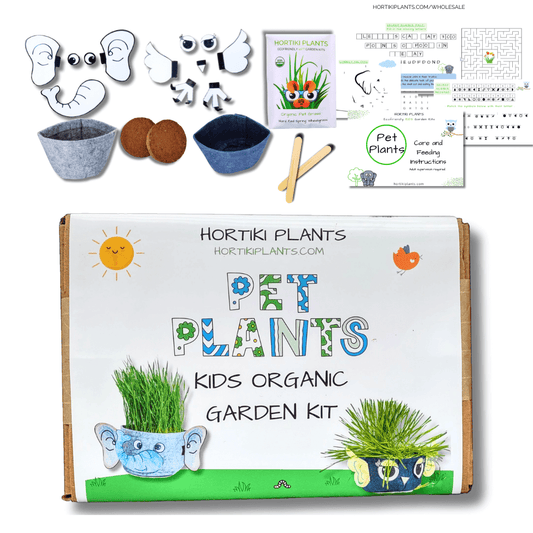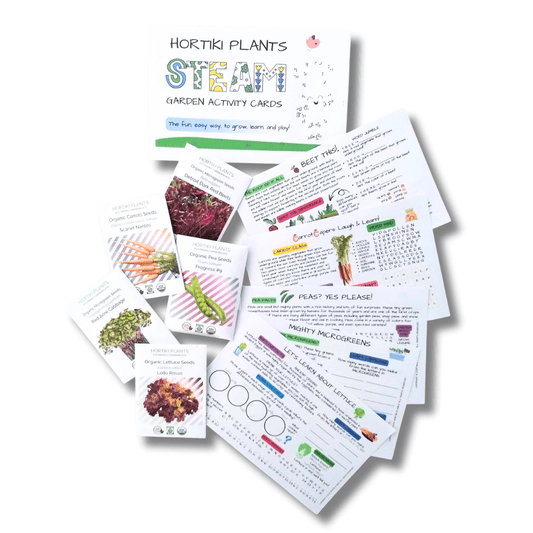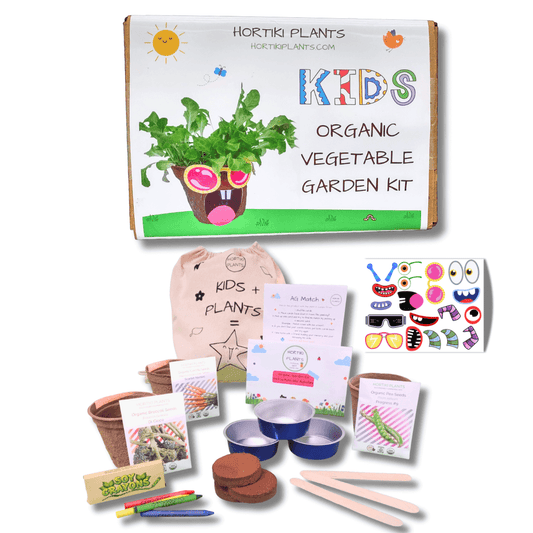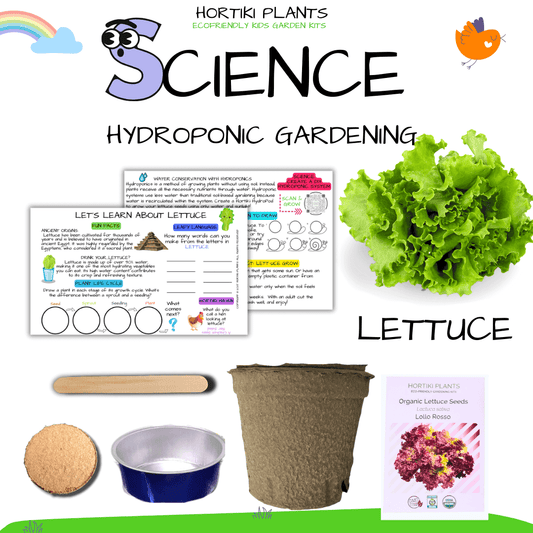Determined to have the best garden of your life this year? Can’t wait for Spring? Hortiki totally understands!
Use the 20+ ideas in the list below to ensure you know exactly what you will plant, what you will need, where you will put everything, and even how much you will spend! Go to the Hortki Plants Free Resources page to get your Free Winter Workbook and create Your Ultimate Garden Plan using the checklist below. 
STEP 1: FIGURE OUT WHAT YOU WANT TO GROW
1. What do you like?
(a) What do you like to eat?
(b) What do you buy from the store that goes bad quickly?
(c) What flowers do you like?
(d) What have you grown in the past that did well?
(e) What did you grow that didn’t do well and why? Do you want to try again? (f) Is there anything new you would like to try?
2. Find Inspiration.
(a) Browse seed catalogs. If you start now you have time to grow anything you want from seed. Take advantage of this early start by being adventurous. Look for new and heirloom varieties that you won’t be able to find in grocery stores.
(b) Flip through gardening magazines. (Previous issues from spring and summer will have plenty of gorgeous photos and tips). Check your public library for free digital magazine subscriptions.
(c) Check out gardening books specific to your growing region. (Again your public library is a great free resource).
(d) Take advantage of public garden tours, talks and classes at garden centers.
(e) Listen to garden podcasts (yes - those exist).
(f) Find inspiration from your favorite cooking shows, recipes, websites, etc. If you’d like to eat it, plan to grow it!
(g) Talk to neighbors, friends, and coworkers with nice gardens.
3. Use the checklist workbook to create a master list of everything you think you want to grow. (You will whittle it down in the stages below). Click here to access the workbook.

STEP 2: DO A LITTLE MATH
4. Identify available indoor and outdoor space and measure.
5. Identify how much light you get in each gardening space.
6. Look up your gardening (plant hardiness) zone. In the US, use the free mapping tool from the United States Department of Agriculture. Identify your zone by your zip code and get printable maps of your local state conditions.
https://planthardiness.ars.usda.gov/pages/view-maps
7. Find a planting calendar that is region specific. In the US, check with your state cooperative extension office.
8. Find your last frost dates and count backwards. Most seed packets will tell you how many weeks before the last frost you should start your seeds indoors.
9. Are you going on summer vacation? (Now is a great time to plan one). But be mindful of how long you will be away when planning your garden. If needed plan to add automatic irrigation to your garden for the time you will be away.
10. Determine your gardening budget. Use the free spreadsheet and tips shared in our 25 Ways to Finance Your Growing Plant Addiction blog post.
STEP 3: DO A LITTLE RESEARCH
11. Keep in mind decorating restrictions if you are renting your living space. Check the rules. Is it okay to add hooks for hanging planters? Trellises on balconies, planter boxes along railings, etc.?
12. Know the rules about watering if you live above someone. Often there will be limitations on when and how you water so you don’t cause leaks and damage the units below.
13. Finish with a list of what you actually can plant based on all the information collected so far. Go back to the list of what you want. Whittle it down based on the research you've completed. Focus on light, space, time, budget, and apartment restrictions. Eliminate anything that isn't a good fit. The end result is your Master Spring Planting List. Congratulations planner extraordinaire!
STEP 4: GET PREPPED
14. If you are gardening in your yard for the first time, have your soil tested. Be sure you are not endangering your plants or your health by planting in contaminated soil.
15. Start compost now for nutrient rich organic matter you can add to your seedlings in a few months.
16. Prep a space to start seeds indoors. Measure the temperature and the amount of light in your seed starting space. Keep in mind some seeds need darkness to germinate. Prepare to have separate light and dark spaces if needed. (Or you can cover seeds that need total darkness).
17. Decide what you will start from seed and what will you buy as starter plants ready to transplant. Determine the total number of small containers you will need for seed starting. How many for live transplants?
18. Find and prep containers
(a) Find containers from previous years.
(b) Look through unwanted household items for potential planters.
(c) Decide what you can reuse and upcycle.
(d) Make a list of what you have and what you need. (Use the template included in the winter workbook).
19. Plan to protect floors from water damage from indoor planters. Add trays and rugs to your list for areas that will need protection.
20. End with a list of anything you will need to buy and in what quantities. When spring garden sales start in a few weeks shop from your well researched and prepared list. This will ensure you are on budget and keep you from buying thing you already have.
Wow. You have done a ton of work! You are now prepped and ready for spring. Let’s do this!
Thanks for reading and don't forget to grab the workbook to keep all your notes and lists in one place. Enjoy the rest of the winter and let us know in the comments below - what are you planning for spring? Hortiki and I would love to cheer you on!
Plant Love!
Victoria LeBeaux, PhD
Founder, Hortiki Plants




